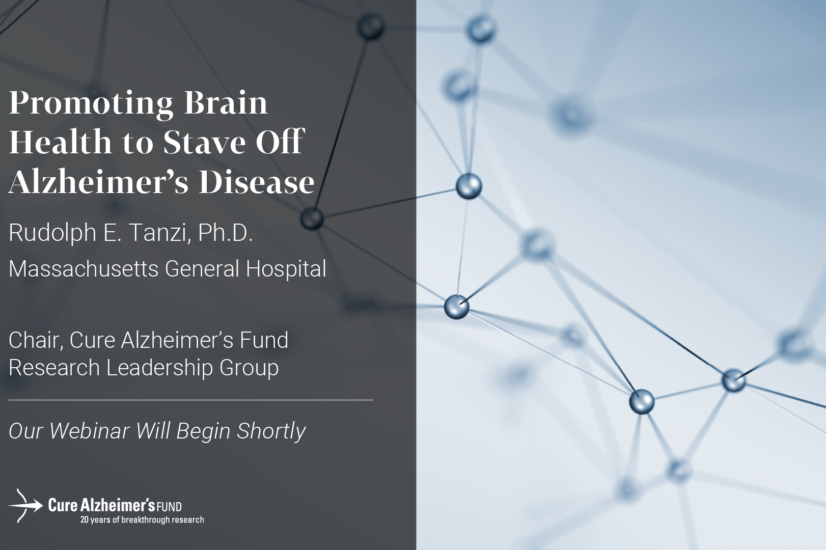Tauopathies, neurodegenerative disorders characterized by the presence of tau protein in the brain, are more likely to emerge in individuals harboring the APOE4 gene. Compared to other APOE variants, the expression of APOE4 significantly increases neuronal loss, decreases brain volume, and increases glial inflammatory signals. In the absence of APOE, however, these consequences largely disappear, suggesting that APOE4 is a precipitating factor.
Although apoE is secreted by both astrocytes and microglia, previous studies have shown that astrocytic apoE particles are larger and contain more lipids than microglial-derived apoE. As a result, some researchers have wondered whether astrocytic-derived apoE might be playing a unique role in the brain. Now, a new study published in Neuron by a team of researchers from Brigham and Women’s Hospital (Oleg Butovsky, Ph.D.) and Washington University School of Medicine in St. Louis (Jason Ulrich, Ph.D., and David Holtzman, M.D.) reports on the role that astrocytic APOE4 plays in tau-mediated neurodegeneration.
To begin with, the research team generated transgenic mice that expressed either Tau/APOE3 (TAFE3) and Tau/APOE4 (TAFE4)—specifically in astrocytes. Once the mice were 5.5 months old (the age of tau pathology onset), they injected mice either with oil (as a control) or tamoxifen to reduce astrocytic APOE mRNA. Indeed, when the team analyzed cortical tissue from both groups four weeks later, they found the tamoxifen-injected group had >80% reduced apoE protein levels compared to the oil-injected group.
After confirming that the tamoxifen-injection strategy sufficiently and specifically reduced astrocytic apoE mRNA and protein, the team examined the effect of astrocytic apoE on tau-driven neurodegeneration. Although overall brain volume was preserved between APOE3 and APOE4 groups, the ventricular volume (typically expanded in the presence of APOE4 and indicative of brain tissue atrophy) was reduced in female tamoxifen-treated TAFE4 mice, compared to oil-treated TAFE female mice, indicating a reduction in brain atrophy. This difference in ventricular volume was not reported between oil-treated and tamoxifen-treated male TAFE4 mice.
Next, the researchers evaluated the effects of decreased astrocytic APOE4 on mouse behavior.
Under normal conditions, healthy mice will spontaneously build nests out of nesting material. In cases of neurodegeneration, this behavior is typically disrupted. Predictably, then, APOE4 mice also showed disrupted nest-building behavior. Interestingly, however, when the researchers injected APOE4 mice with tamoxifen, effectively decreasing astrocytic APOE4 expression, the mice began normally building their nests. The result strongly suggests that APOE4 negatively impacts both the brain and behavior.
The researchers also measured plasma protein levels of neurofilament light chain (NFL), a marker of neuroaxonal damage and neurodegeneration. Compared to oil-injected mice, tamoxifen-treated mice exhibited lower levels of NFL, indicating that APOE4 removal improves markers of neurodegeneration. Cortical tissue analysis of phosphorylated Tau (pTau) revealed that removal of astrocytic APOE4 significantly decreased tau phosphorylation in females, but not in APOE4 males or APOE3 mice (females or male), consistent with the observation that removal of APOE3 confers no neuroprotection, but APOE4 does. Collectively, these experimental results indicate that astrocyte-derived APOE4 is a major factor in driving tau-dependent neurodegeneration in females.
Experiment after experiment in the study revealed that removal of astrocytic APOE4 benefited the brain, preventing damage otherwise expected in APOE4-carrying animals. Astrocytes moved from active states to homeostatic states; oligodendrocytes that were once reactive in the presence of tau protein were healthier and more stable, and microglia that were once active and phagocytosing synapses could now rest easy. Given this set of intriguing results, the researchers are optimistic that new treatment strategies targeting astrocytic APOE4 could slow neuronal and synaptic loss and preserve function. Perhaps, most encouragingly, such an intervention, in principle, could be effective even after the onset of neurodegenerative symptoms.
Oleg Butovsky, Ph.D., Brigham and Women’s Hospital
Jason Ulrich, Ph.D., Washington University School of Medicine in St. Louis
David Holtzman, M.D., Washington University School of Medicine in St. Louis








